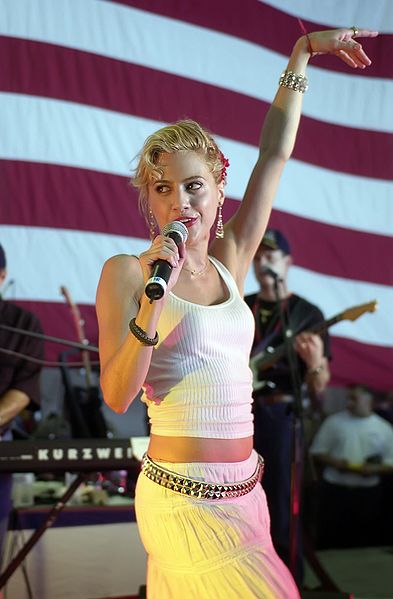Modern Environmentalists:
* Do-Nothings
* Global Warmists
* Everyday Environmentalists

REAL Environmentalism
Two recent articles got us thinking about modern environmentalism here at DBKP.
One, in the New York Times ,A Seafood Snob Ponders the Future of Fish, discusses a depressing topic: depletion of first class fisheries.
Tuna, Cod, Atlantic Salmon stocks are all being destroyed or are virtually nonexistent. Indeed except for the Hawaii Tuna Fishery, called the Western Pacific fishery, and the Alaskan fishery, all major fisheries in the world are threatened. Both these fisheries are strictly managed by the American government, but both are subject to extreme poaching by the Chinese, Japanese, Koreans, Russians, and everyone else.

Which brings to mind that there are three types of modern environmentalists.
The Do-nothings
These are the folks that not only want a stand still on everything, but they want to punish anyone that tries to help. This was the Federal Governments policy for years.
No one could develop land that had an endangered species. No one could possess an endangered species. The result was that species died because the law was economically inimical to people--and fatal to species which were slowly dying off because of improper habitat or no breeding.
The fallacy of this law was dramatically demonstrated when after years of pressure, the State of Hawaii received an exemption for endangered plants, allowing them to be sold, as long as the same were from seed. All of a sudden endangered plants were being sold everywhere. And some, by no means many, started appearing in the wild. Whether the Girl Scouts or by seed dispersion, whatever, an improvement occurred. And some citizens could be found on weekends replanting forests and beaches, proudly, with native species.

ABOVE: Desert to desert, dust to dust]
The Global Warmists.The Gorebots, Greenpeace, etc.

These people want to destroy the world as we know it.
Many are suicidal, hoping for the death of mankind.
Many are despots making dollars off the imbeciles that pay their exorbitant speaking fees, salaries and meaningless carbon credits.
Those that are not scamming are too stupid to realize it is a scam.
The rest are filled with irrational hatred.
Everyday Environmentalists
These people take many forms:
- The people involved in road and stream cleanup as volunteers;
- Those who hand out free trees on Arbor Day that are rare or offer food to wild fauna;
- The hunters who not only pay for wildlife stamps, but through programs such as Ducks Unlimited, have preserved more wetlands and game bird habitat in America than all other efforts--including the Federal Government--put together;
- Fishermen and hikers who clear the wood of trash and plant habitat that encourages animal and diversified indigenous plant growth.
Which brings us to the next article.
Virtually gone, giant clams make comeback
There really is only one way fisheries will make a come back. Like forests, rare plants, and wolves, sometimes you just got to get in there and do what has to be done. If you want to increase something in nature, then do it. Some will live, some will die. But if you are persistent, and can correct the elements that caused the destruction in the first place, then you are on your way.
Two people can make a difference if someone cares, if government can assist rather than be the enemy.
The world’s largest shell fish weighing up to 230 kilos (507 pounds) and measuring up to 1.4 meters (4.5 feet) in length, the Tridacna gigas was once a common sight in waters around Philippine islands.
Highly prized for its meat and decorative shell, the giant clam had virtually disappeared from the Philippines, fished out by local and foreign fishermen.
Shocked by the depletion of giant clam stocks, marine biologist Edgardo Gomez decided to do something about it.
In 1985, when he was head of what is now the Marine Science Institute of the University of the Philippines, he began an ambitious program to breed and restock the bays and inlets around the Philippines, a Southeast Asian archipelago of more than 7,000 islands.
...
"Saving the giant clam has been a long process that has involved not only breeding and restocking but educating local fishermen that they are worth saving,” she added.
"Clams form an integral part of a coral reef’s ecosystem. At the same time, they can also be farmed as a sustainable livelihood,” Licuanan [a graduate student in Australia when she got hooked on the program in 1986] said. Already reefs and bays in many parts of the Philippines are being restocked with mature giant clams from the project’s protected ocean nursery areas off Bolinao in the Lingayen Gulf... “During the last clam-spawning in May, we managed to get 12 million fertilized eggs [and] from that we now have 200,000 clams in tanks in the hatchery measuring one centimeter in length,” she added.
“How many of them will survive the transfer to the ocean nursery where they will be put in cages suspended off the ocean bed, we don’t know. It’s just up to nature.”
And there it is.
Get rid of the Do Nothings, The Global Warmists, and these other worthless loons. Get your hands dirty and plant the right habitat. Breed the right animals and let them loose. Restock the oyster beds, the sponge beds, the clam beds, the fisheries, the snake dens, the gopher and prairie dog towns.
Let the weasels and ferrets loose!

by pat
images:
* The global education project
* npr
* reef daytripper
src="http://d.yimg.com/ds/badge2.js"
badgetype="small-votes">
ARTICLEURL






























No comments:
Post a Comment
Leave your name/nic.
We've changed the comments section to allow non-registered users to comment.
We'll continue like that until it's being abused.
We reserve the right to delete all abusive or otherwise inappropriate comments.